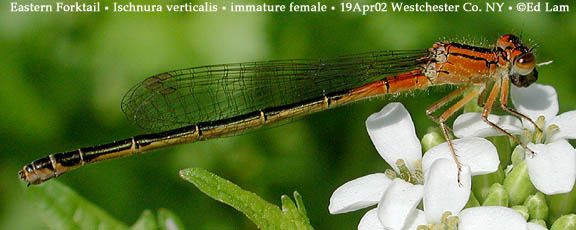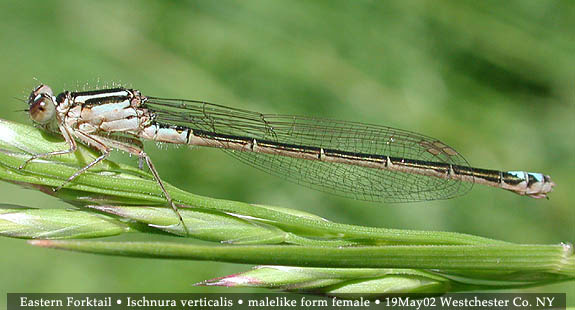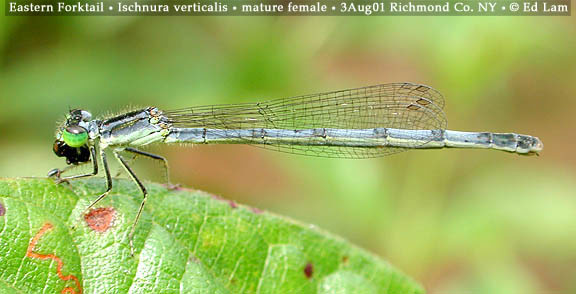
Eastern Forktail (Ishnura verticalis) 0.8 - 1.3 inches in length.
Field identifiable.
For much of the Northeast, the first damselfly on the wing is the Eastern Forktail. In southern New York, adults usually emerge at the beginning of May. The image on the left was taken on April 17, 2002 – the earliest recorded date for any damselfly in New York State. It was an unusually warm Spring and Eastern Forktails were seen on that same day in both New York and Westchester counties.
Besides being one of the earliest damselflies, Eastern Forktails have one of the longest flight periods, and they can often be found well into Autumn until frost. They inhabit virtually any freshwater pond, lake or slow stream and are mostly found low among vegetation near or at the shore. The Eastern Forktail is probably the most common odonate in the Northeast so novice damselfly-watchers will quickly encounter it and should try to learn it well.

Like all damselflies, newly emergent adults are dully colored. Over a couple of days, their patterns emerge and their colors brighten. Male Eastern Forktails become bright green and black on the head and thorax. Areas that are green are parts of the face, the lower portion of the eyes, spots behind the eyes (called eyespots), a narrow shoulder stripe (called the antehumeral stripe), the sides of the thorax, and the upper legs (the femurs). The abdomen is mostly black. There is some green mostly on the lower sides of segments 1 - 3, but the most important and noticeable marking is the blue that covers segments 8 & 9. On the sides of these segments are rectangular black marks.
Similar species: The sprites (Nehalennia) have metallic green thoraxes and lack shoulder stripes and eyespots. Of the six species of forktail in the Northeast, the males of five species have green and black thoraxes but different abdomen patterns. The male Fragile Forktail (I. posita) has no blue on the abdomen. The male Rambur's Forktail (I. ramburii) has segment 8 completely blue, segment 9 has blue on the sides but is black on top. The male Furtive Forktail (I. prognata) has only segment 9 completely blue. The abdomen of the male Citrine Forktail (I. hastata) is mostly bright yellow.


